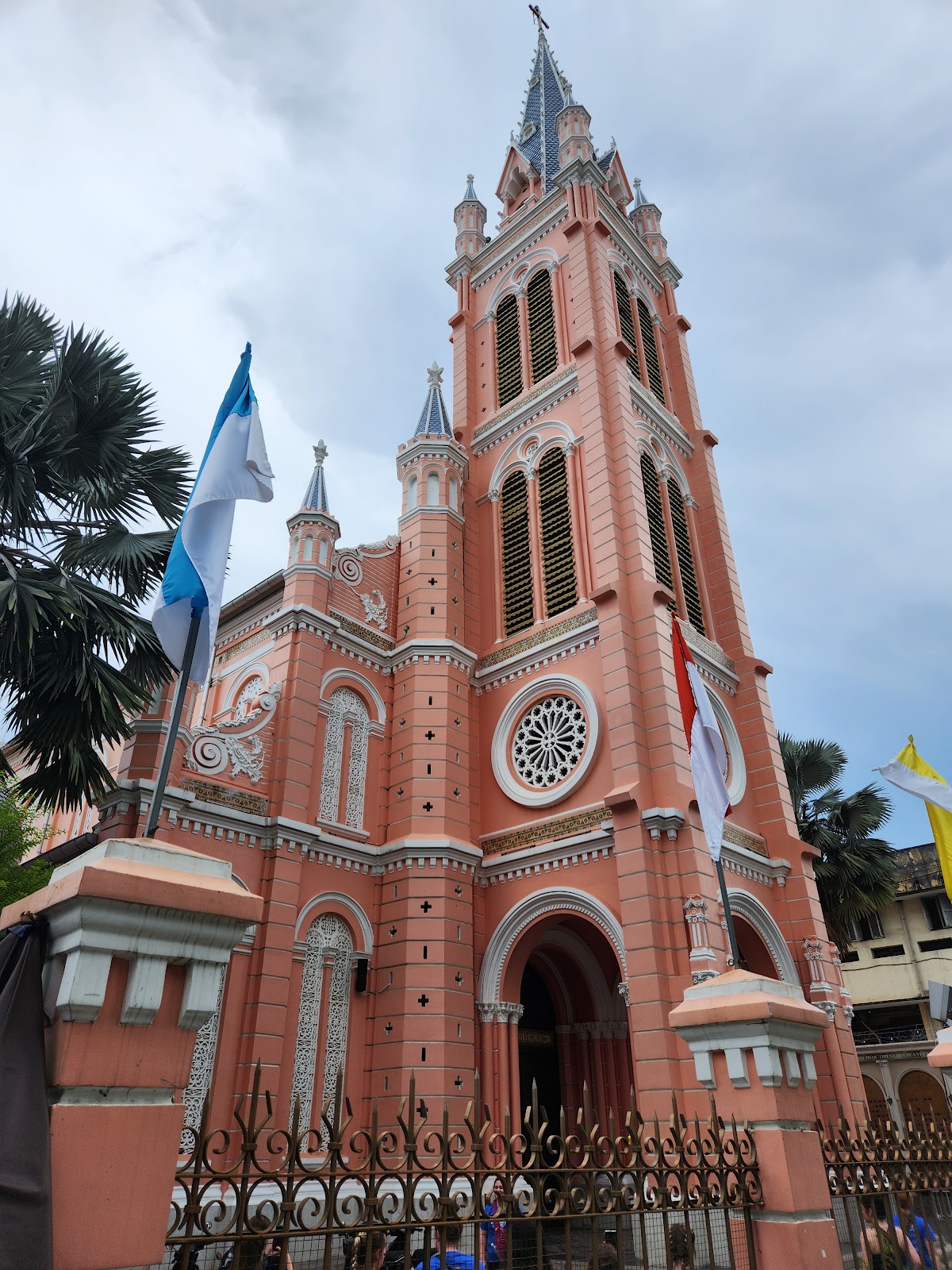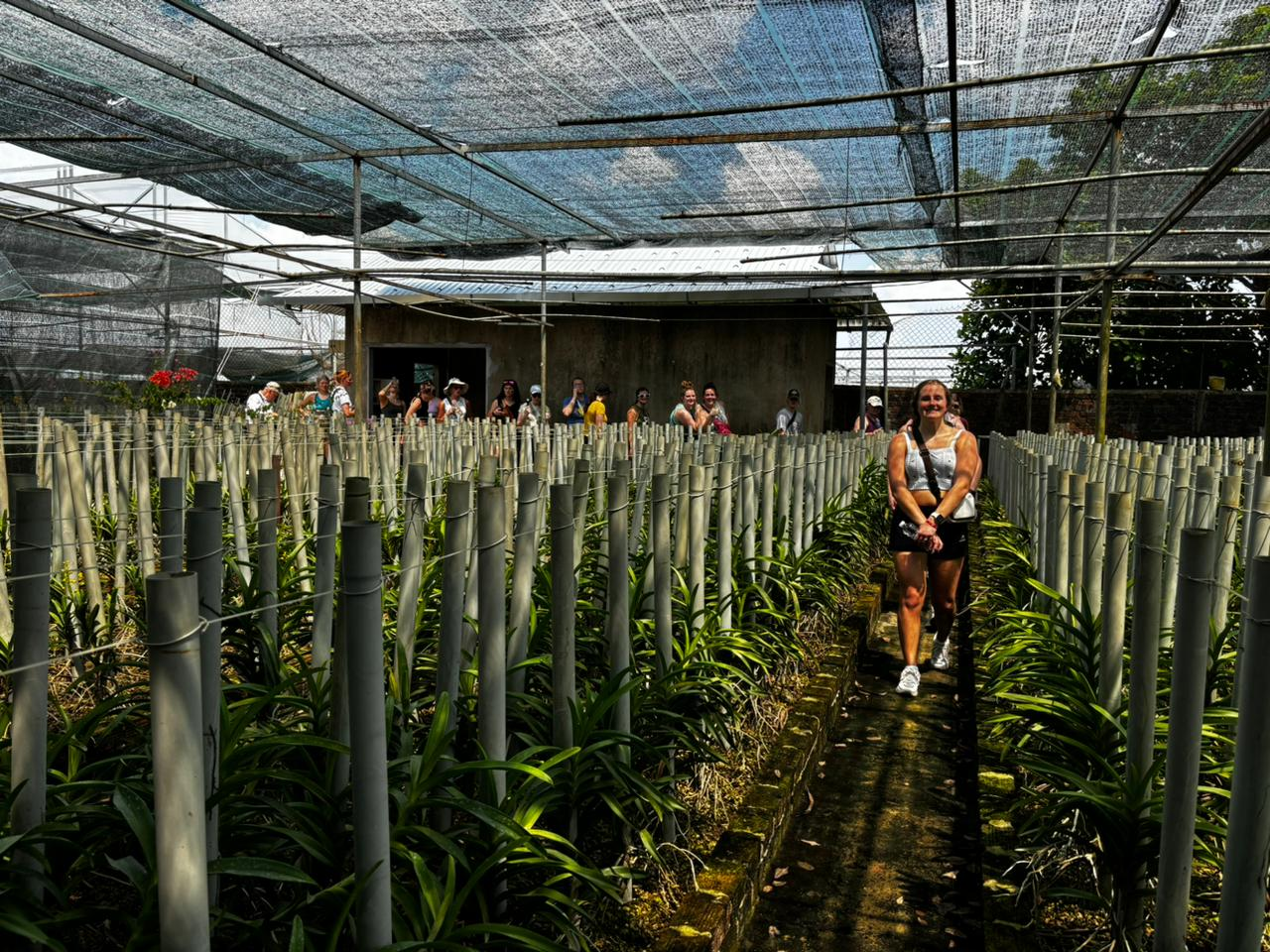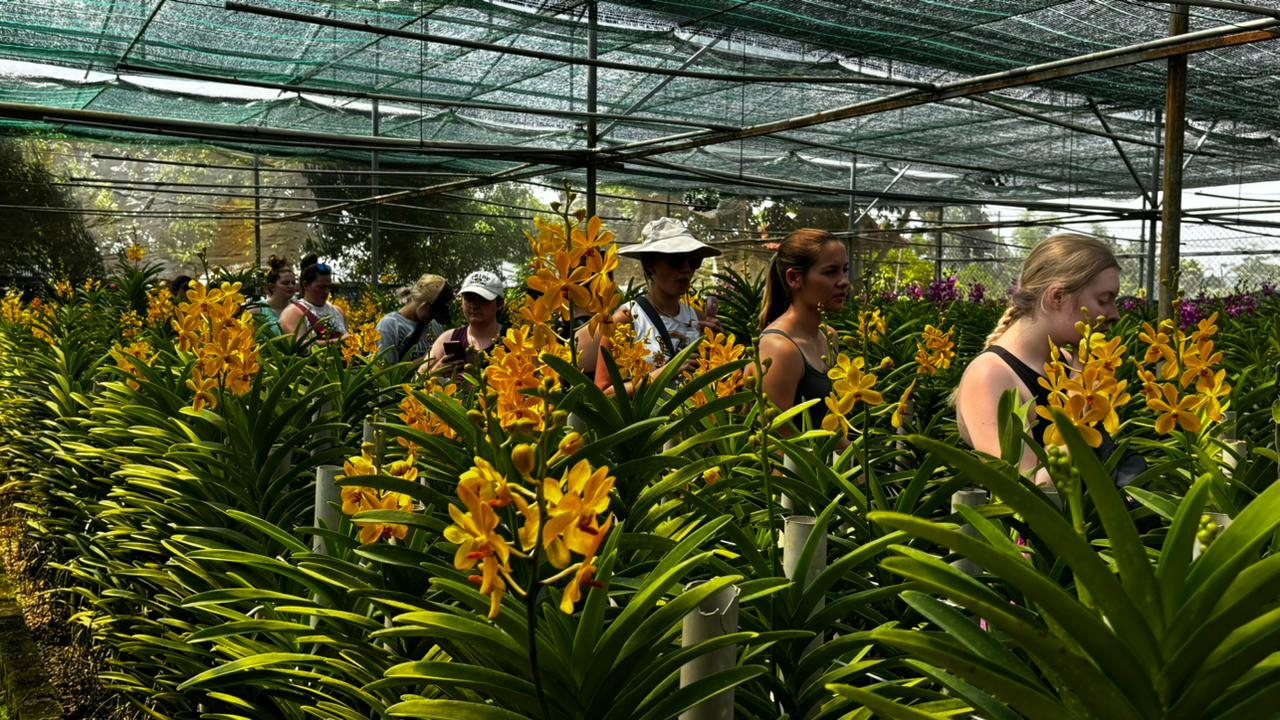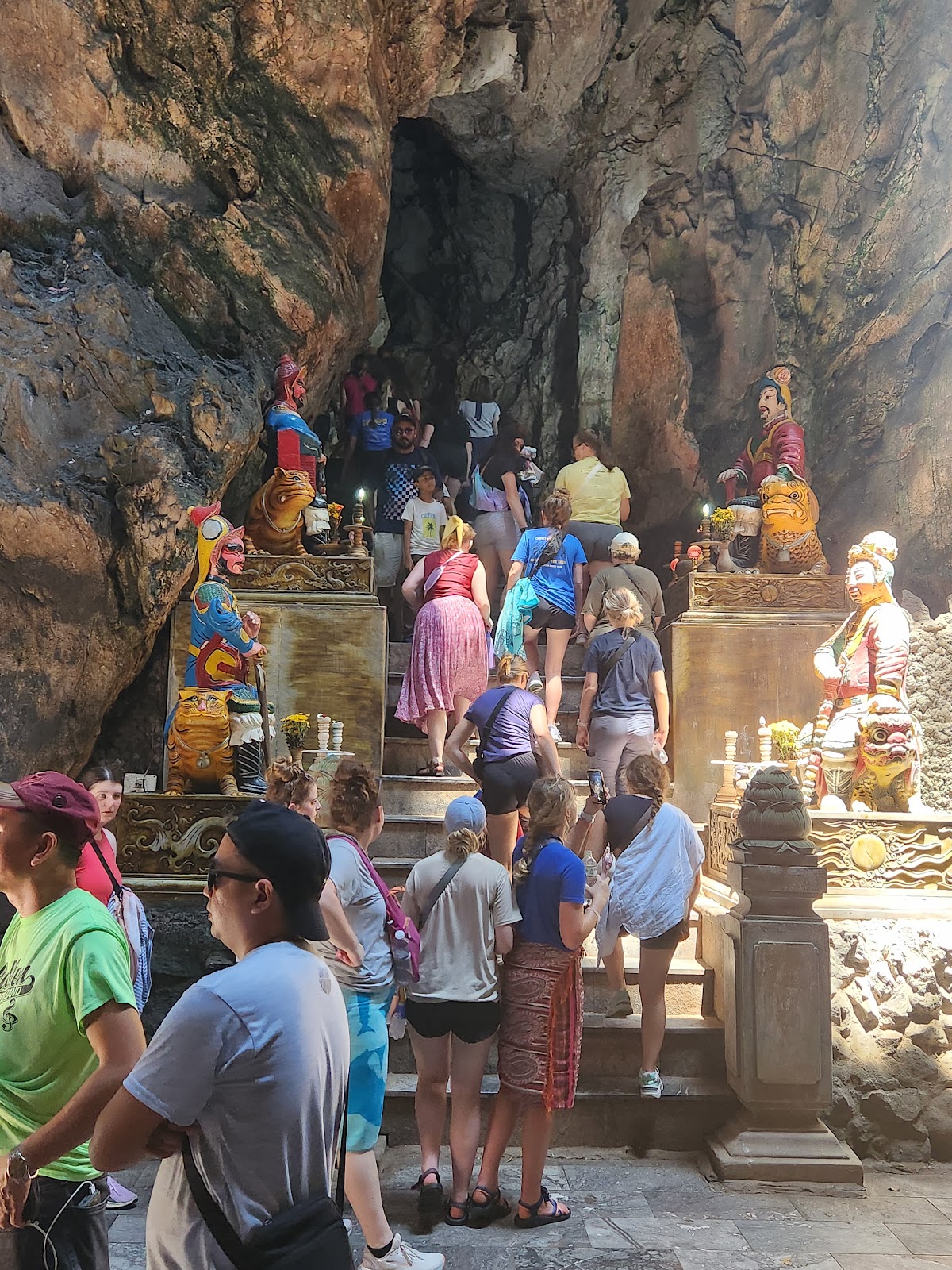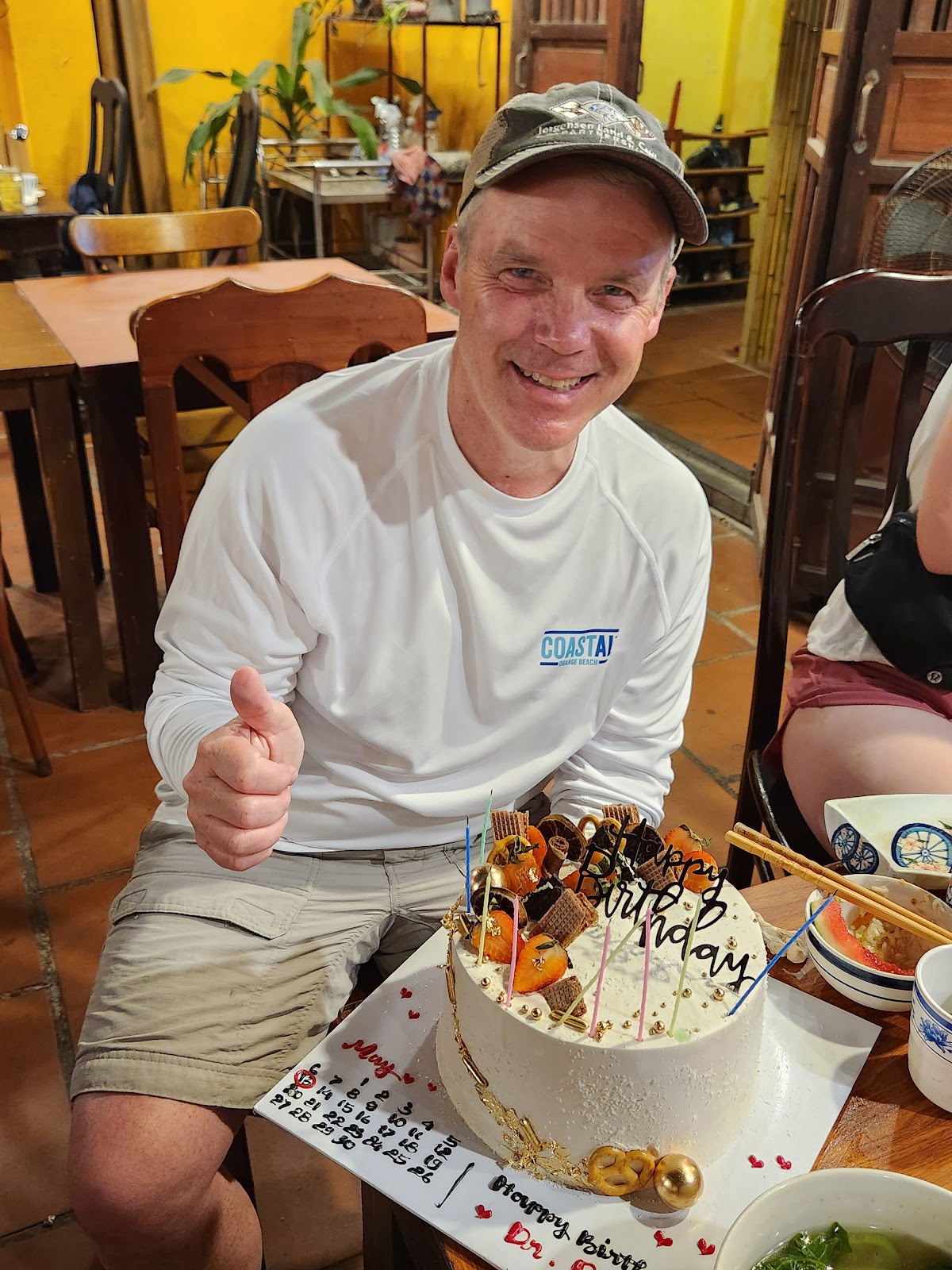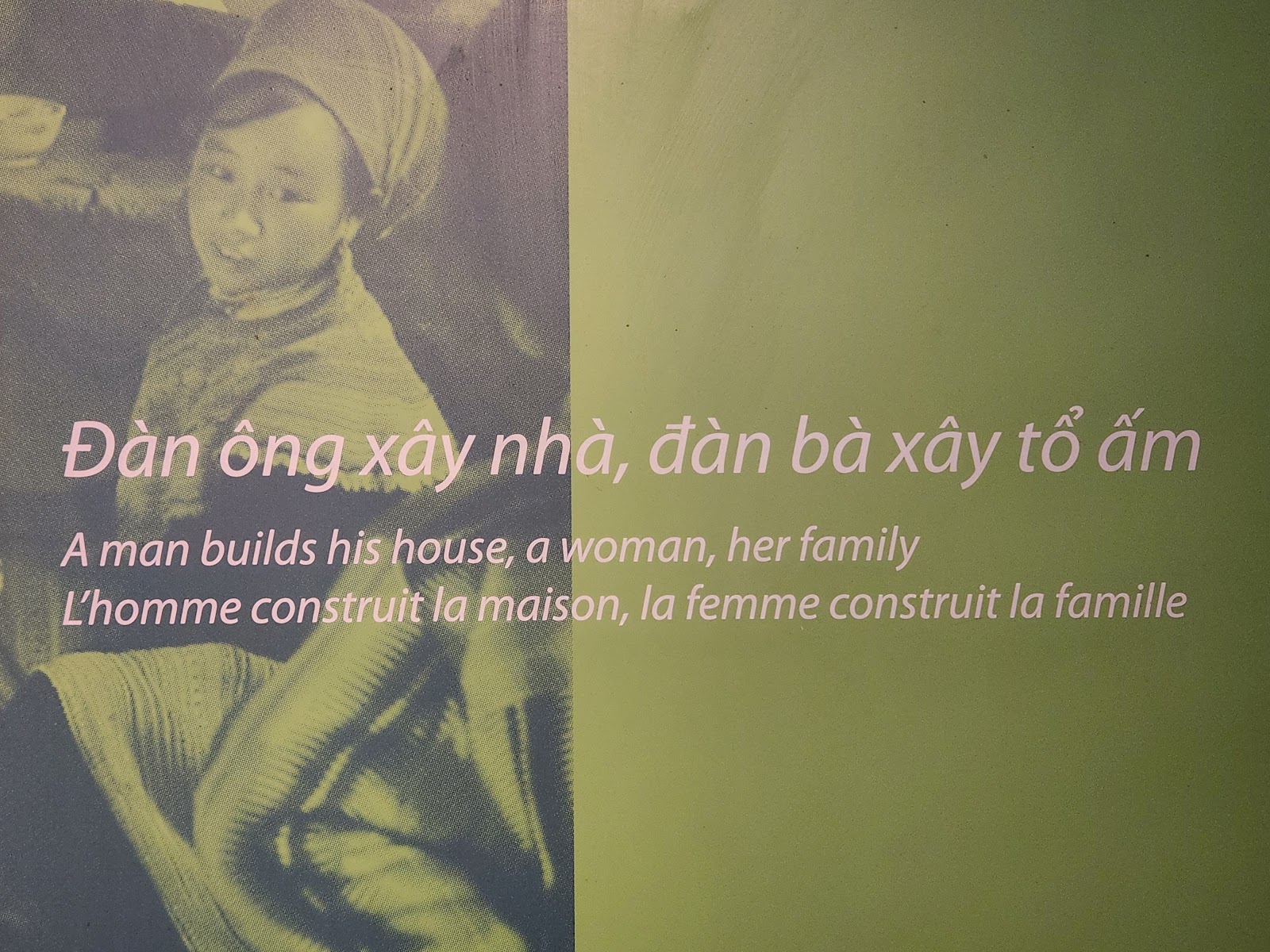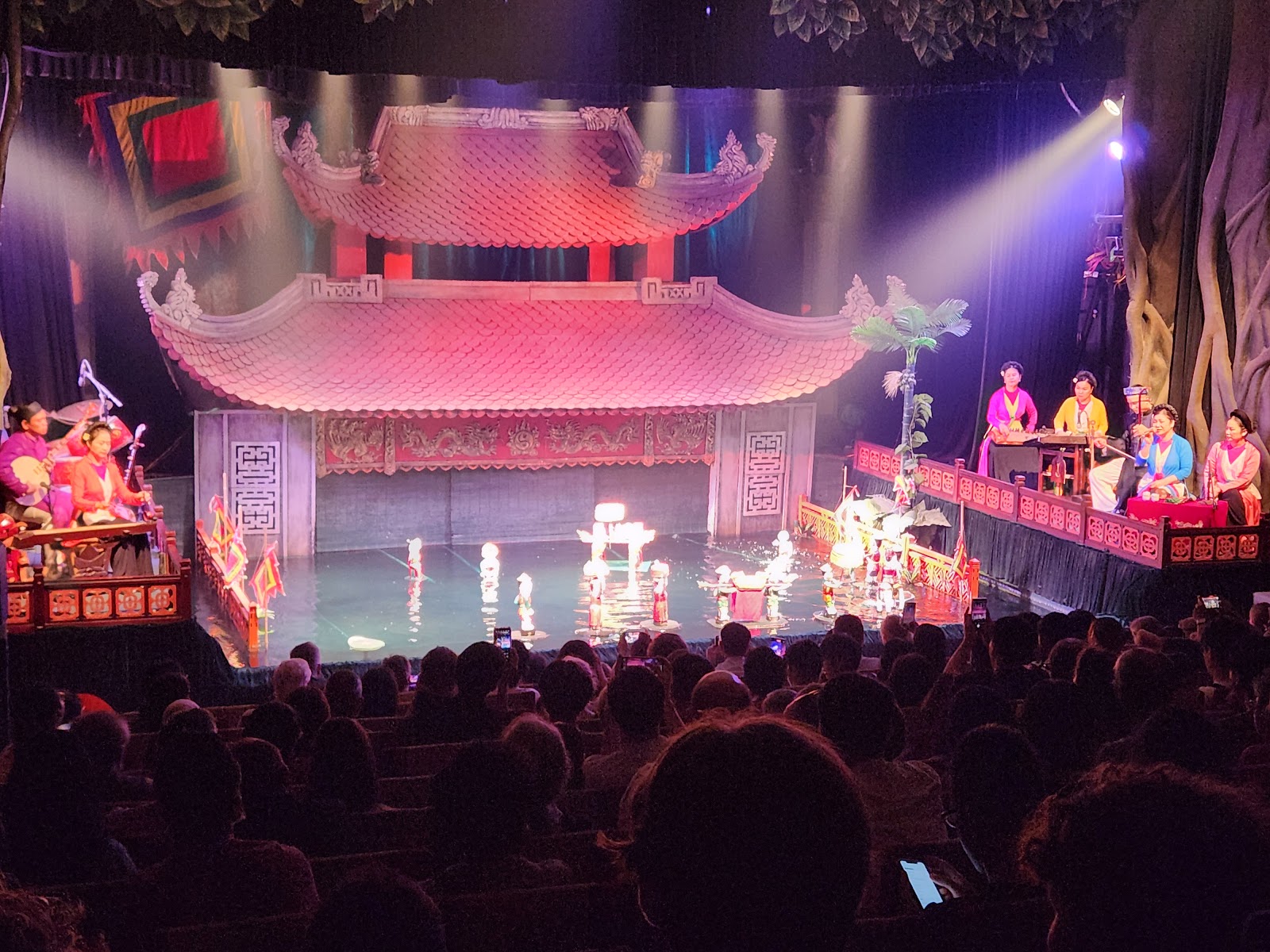May 18 Sat
Today marks the last full day in Vietnam for us (#sad). This was a day many of us students were excited for because our itinerary was filled with a lot of great things. The first being a rubber tree plantation. We parked our bus on the side of the road and got to see the rubber trees up close. Vietnam is one of the largest producers of rubber in the world. Most countries have switched to synthetic rubber from petroleum because there are not enough trees to supply the demand. Vietnam still grows lots of trees not only in Vietnam, but also in Laos and Cambodia. The trees will produce rubber for 25-30 years if harvested correctly. Rubber comes from the sap produced by the trees, so to harvest the rubber they must take of two-thirds of the bark. If they take more than two-thirds, the tree will not be able to disperse nutrients to continue to grow. The sap of the tree comes out looking like white latex, but once dried, it turns to the rubber we know.
They use anything from tin cans to coconut shells to collect the sap. Think about how we collect maple syrup from a tree, it is the same process for the rubber sap. After we finished looking at the trees, we boarded our bus again and headed to our next destination.
The next stop was the Cu Chi Tunnels. These small and narrow tunnels were used during the Vietnam War by the Viet Cong soldiers and the local community as hiding spots, living spaces, supply routes, etc. Along the trails, we saw various types of traps used to capture and injure American soldiers- most being covered up with grass and leaves that the soldier would fall into. These traps were originally used for capturing wild animals for food; however, they were transitioned into human traps during the war. We also saw several entrances into the tunnels that could be covered up and hidden.
They look like quite small holes in the ground, but almost everyone from our group tried entering it and fit right in (as long as they kept their arms straight up while entering)! Continuing along the path, we came to a stopping point where visitors could pay to shoot a couple of rounds of guns that were used in the war. These guns were left by America when they pulled out the troops from Vietnam. Some of the guns that the students shot were M16, M30, AK, K54, and M60.
At this stop, we also got to watch a woman make rice paper that was laid on a bamboo sheet to dry in the sun. Up next was trying some common war foods including tea and cassava. Last on the list was getting to enter the Cu Chi Tunnels underground. These again were quite small while in them. One needed to do a lot of bending down or leaning over the entire time. Both shoulders almost touched either side of the walls in the tunnels and there was no room to turn around if needed. Most of the group braved through the tight tunnel space and exited at another point above ground.
Imagining an underground tunnel system for daily living can be hard to comprehend, but trying to picture life while physically in the tunnels was even more difficult. The tunnels students went through were enlarged so that the tourists could fit into them. Lastly, some other highlights of this stop were that some students got to see the insects that were there like scorpions and centipedes as well as learning about how they cooked underneath the ground as to now reveal their location to the enemy.
Once we saw all the different artifacts of the Cu Chi Tunnels and learned the history behind them, we once again loaded onto the bus and went to our last meal together. After a delicious meal outside along a river, we loaded up and went back to Saigon for the rest of the afternoon. The students had the choice of either going to the Ben Thanh Market for 3 hours or the War Remnant Museum & the Ben Tanh Market for 1 ½ hrs due to time restraints.
The War Remnants Museum is a another good example of “history is written by the winners”. In the museum courtyard are US helicopters, planes, tanks, cannons, and boats that were used in the war.
The museum itself is divided into 3 floors. The first floor is dedicated to international support of the Vietnamese people against their wars with France and then the US. The second floor covers war crimes and Agent Orange, and the third floor was dedicated to the war journalists who were killed, and all their photographs, many which were Pulitzer Prize winners.
Finally there was a room covering the “documented truth” of both wars. While it was difficult going through all the rooms, it also reinforced the adage that “war is hell”. One of our fellow students made a great observation of disconnect. When we were in Hanoi and went through the Women’s Museum, it told about all the ways women helped fight the war, including actual combat, with more examples of direct fighting by women at the Chu Chi tunnels. However, in the War Remnants Museum, the US was vilified for fighting against women. One promising thing about this museum was the emphasis on peace in the future.
The day was ended for everyone by shopping in the Ben Tahn Market, which is a block square and sells everything you can imagine and then some. We got to barter on price, which is a whole new experience and a lot of fun. We had supper on our own, returned to the hotel, and started packing since we leave the hotel tomorrow at 4 am for our flight back home.
Catherine Klein, Megan Linke, & Jaylynn Frandrup
















